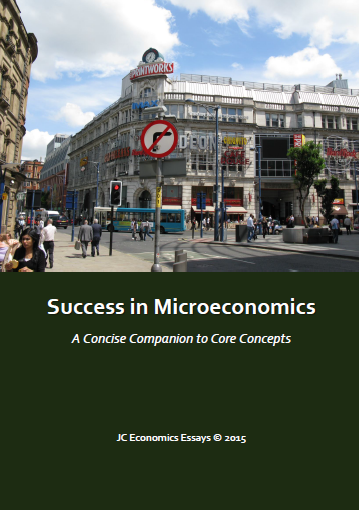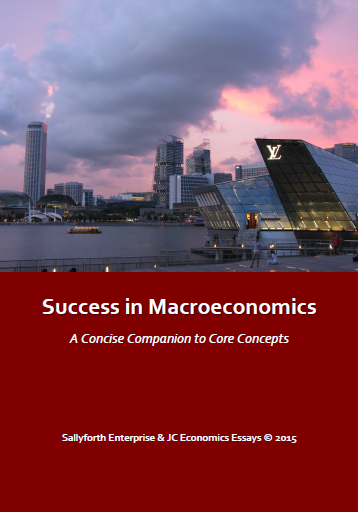Protectionism refers to the imposition of economic policies aimed at restricting trade between countries, designed to protect domestic businesses and workers from foreign competition, while free trade refers to the exchange of goods and services across international boundaries. Recently, governments have been adopting protectionist measures in the belief that this would offset the impacts on their economies from the worldwide recession. Fundamentally, the question is: during a period of worldwide recession, can protectionism be justified, or should governments adopt a policy of free trade, to address the macroeconomic problems of rising unemployment and lack of economic growth? This economics paper argues that, while some would argue that protectionist policies can be justified during a worldwide recession, governments should still follow Premier Wen’s economic advice to pursue a policy of greater international free trade.
There are many methods used by various countries to protect their economies, but fundamentally these methods either discourage imports or encourage a country’s own exports. For example, a tariff is a tax levied on imports, where a specific tariff is levied as a fixed charge per unit while an ad valorem tariff is levied as a fraction of the value of a unit. A tariff raises import prices, hence causing consumers to switch from imports to locally produced goods. An import quota is a direct restriction on the quantity of imports. The quota is typically enforced by issuing licenses to a group of individuals or firms. The quota directly reduces the availability of imports, hence pushing up prices of imported goods. Per unit output subsidies can be given to help local producers lower their production costs, which enable them to better compete with more efficient foreign producers. These methods, among others, arguably can protect the domestic economy during a period of recession.
On the one hand, it can be strongly argued that protectionism can be justified on grounds of employment protection. Protectionism arguably helps the economy against both demand-deficient and structural unemployment. First, during a period of recession, protection may be used to reduce demand-deficient unemployment, where there is insufficient AD to fully utilise the unemployed resources in the economy, because imports are discouraged while exports are encouraged, which theoretically boosts AD, shifting it to the right. Furthermore, trade restrictions are sometimes imposed during an economic downturn to reduce cyclical unemployment. For example, under trade union pressure, governments may decide to curb imports that are in direct competition with domestically-produced goods in order to preserve the jobs in these industries.
Second, protectionism can also be given to declining sunset industries to slow down their contraction, thus allowing more time for labour to be retrained and re-channelled to other growing sunrise industries. This reduces the degree of structural unemployment, which can be defined as the unemployment arising from the mismatch of skills in the industry as the structure of the economy changes. Many developing countries, especially China, and developed economies, such as Singapore, face structural unemployment as the production structure of the economy as well as demand conditions change and mature. Hence, protectionism can be justified through employment protection.
However, there are many limitations of protectionism in addressing a situation of worldwide recession. First, protectionism creates a “beggar-thy-neighbour” effect whereby the exports, output, and employment of its trading partners are reduced, which in turn curbs the exports, output, and employment of the country initiating the protectionist measures. Secondly, with protectionism, trading partners are likely to “retaliate” and impose their own import restrictions, again further causing the initiating country’s exports, output, and employment to subsequently suffer even more. For instance, China may face countermeasures if it were to implement protectionist measures on the USA, which would not benefit both countries.
Furthermore, although the initial intention may only be to offer temporary protection to help smoothen the adjustment and reallocation of resources, protection is politically difficult to remove, once it has been put in place. Vested interests are created and the industries concerned will inevitably resist any removal of trade barriers. In the long run, the country might end up having resources being locked in inefficient ‘sunset’ industries, hence depriving its expanding ‘sunrise’ industries of precious economic resources. For instance, this occurred in Latin America after WWII under the system of Import Substitution Industrialisation, as contrasted with the success of the East Asian countries which pursued Export Oriented Industrialisation. All these limitations reduce the usefulness of protectionism in addressing a situation of worldwide recession.
On the other hand, other than the limitations of protectionism, international trade might in fact help a country tide a recession. First, developing economies sometimes lack sufficient domestic demand to enable full utilisation of resources. Trade allows such countries to overcome domestic demand constraints by giving them access to larger world markets. With additional demand coming from exports, greater utilisation of otherwise unemployed resources raises output, income, and employment. For instance, Singapore, a small and open economy, depends upon trade as an engine of growth for her national income and employment. Furthermore, rising export demand further stimulates investments, causing the AS to shift outwards faster. These investments, for example in infrastructure facilities like ports and storage warehouses and export industries, in fact allowed Singapore to expand its export sector. Seen from these perspectives, trade arguably acts as an engine of growth as it enables both AD and AS to increase faster than under autarky, and therefore possibly contributes to a country’s long run sustained economic growth.
Second, accompanying the development of merchandise trade would be the development of services like shipping and airfreight, air travel, banking and finance, and tourism. With time, a developing economy experiences structural change and becomes less dependent on merchandise trade and manufacturing, instead diversifying into services, thus becoming more like a developed economy. For instance, countries like Singapore have developed from a third world to a first world country by experiencing structural change from international trade. Therefore, governments like China should also pursue a policy of free trade to benefit from economic diversification, maturation, and structural change, which could arguably ameliorate the impacts of recession.
In conclusion, while protectionism can be politically expedient and may even ameliorate unemployment – both demand-deficient and structural unemployment – in the short run, it should not be used as an active policy to address recessions. This is because of the limitations of protectionism as well as the foregone benefits of international trade as an engine of growth that can also provide fundamental structural change to the economy, which would put it in good stead when the world economy recovers. Alternatively, large economies like China could also encourage local, domestic demand through the use of expansionary monetary and fiscal policies, and that could drive their economic growth during periods of recession, because they have the option to depend on domestic demand, whereas smaller and more open economies like Singapore would have to depend on international trade and globalisation to drive their economies. Thus, in the final analysis, the policy options taken to address the problems really depend on the countries involved, but to a large extent international trade is a much better policy than protectionism.
JC Economics Essays: This economics essay is a sample answer to an adapted economics question from the H2 Economics A Level paper, November 2013. The response was co-written by two economics lecturers for a tutorial class, in order to teach about protectionism and international trade for the A levels examination. However, this particular economics essay is only one possible response to the question - what could be done differently? Furthermore, how would you improve upon this answer, what real world examples could you use to buttress your arguments, and what can you do to improve this essay? Remember to think through the answers and how you can make economics arguments better. Thanks for reading and cheers.



